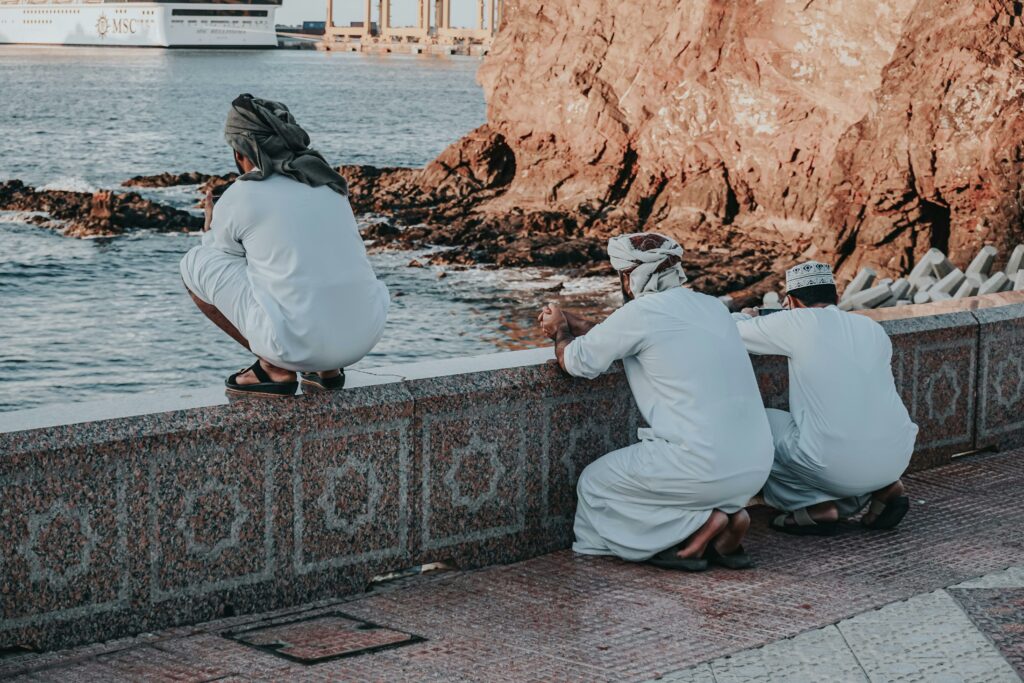![]()
The Sultanate of Oman, located on the southeastern tip of the Arabian Peninsula, is a country whose human development has made significant progress in recent decades. The Human Development Index (HDI), which measures progress in three fundamental areas—health, education, and income—reflects the country’s efforts to improve the quality of life of its citizens.
1. Oman’s HDI: High Human Development
The Sultanate of Oman is among the countries classified as having “high human development” according to the UNDP (United Nations Development Programme). The country has made great strides in the areas of health, education, and income, allowing it to maintain an HDI above the average for middle-income countries.
Although Oman is not among the “very high” HDI nations, it stands out for its human development model focused on sustainability and social inclusion.
2. Life expectancy and health
Life expectancy at birth in Oman is high, often above 75 years, reflecting the improvement in health care in the country. Health services have expanded significantly since the early 1970s, with investments in modern hospitals and clinics, and training of local health professionals. The country has an accessible health system, and vaccination programmes have significantly reduced infant mortality.
However, Oman faces health challenges like many countries in the Middle East, including the rise in chronic diseases, such as diabetes and heart disease, linked to modern lifestyles. The country has implemented public health policies to encourage healthier lifestyles and combat these issues.
3. Education and literacy rates
Education is an area where Oman has also made notable progress. The country implemented educational reforms in the 1970s that made education free and compulsory at the primary and secondary levels. Today, the literacy rate in the Sultanate is over 95%, a clear indicator of the success of the country’s education policies.
Higher education has also expanded with the establishment of local universities, such as Sultan Qaboos University, as well as partnerships with international institutions. However, there are still challenges in improving the match between training and labor market needs, particularly in the private sector.
4. Income and Standard of Living
Oman enjoys a relatively stable economy thanks to its oil and gas reserves, although the country is actively seeking to diversify its economy to reduce its dependence on hydrocarbons. Oman’s gross national income per capita is relatively high, and there is a social security network to support citizens in difficult times.
However, reliance on the oil sector remains a vulnerability for the country’s economy, particularly in the face of fluctuations in oil prices. This is why the Sultanate has put in place “Vision 2040”, a strategic plan that aims to diversify the economy, strengthen the private sector and promote innovation.
5. Social inequalities and challenges
Oman has made progress in reducing social inequalities, but challenges remain. The country still needs to ensure the inclusion of marginalized populations, including expatriates who make up a significant proportion of the population and often occupy jobs in lower-paid sectors.
Although Oman has made efforts to ensure a more equitable distribution of wealth, disparities exist between urban and rural areas, particularly in access to health services, education and economic opportunities. The government continues to work to reduce these inequalities, but the process remains a challenge.
6. Future Outlook
The Sultanate of Oman, under the leadership of “Vision 2040”, seeks to enhance its human development by diversifying its sources of income and encouraging investments in sectors such as tourism, sustainable agriculture, technology and renewable energy. The country also focuses on strengthening governance and policies to ensure inclusive and sustainable growth.
Conclusion
Oman’s HDI reflects the country’s successes in human development, particularly in health and education. However, Oman faces several challenges, such as dependence on the oil industry and social inequalities, which require continued attention. Through its economic and social reforms, the Sultanate aims to further improve the quality of life of its citizens and build a more diversified and resilient economy for the future.

